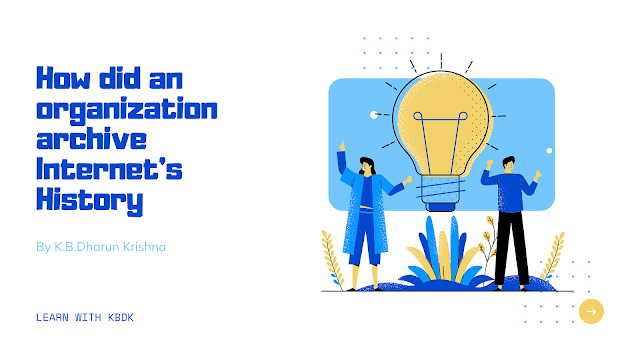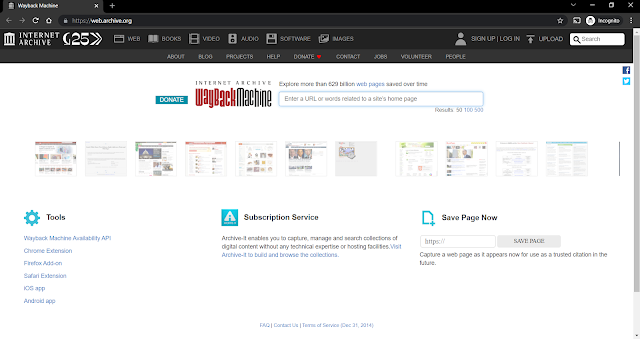How did an organization archive Internet's History?
 K.B.Dharun Krishna
K.B.Dharun Krishna
The Story of Internet Archive's WayBack Machine
Internet Archive is an American Non-Profit Organisation that maintains a digital library of millions of free books, movies, software, music, websites, and more. It was founded in 1996 to give
"Universal Access to all languages and information". They created Wayback Machine to maintain the Digital archive of the Internet (World Wide Web)
Image of the WayBack Machine at https://web.archive.org
WayBack Machine helps us to travel back in time and allows us to view how websites looked in the past. Since 1996, they had archived over 613 billion web pages*. The purpose of the WayBack Machine is to collect as much content as possible from the Internet that might otherwise be lost when the website's domain changes or is closed down. It helps us to see how the advent of technology has changed our lives on the Internet.
WayBack Machine allows the user to create a Web capture (Caching/Saving of the respective webpages) of any website manually. This Web capture is labelled with the date of the capture and the webpage's address. Also, WayBack Machine automatically creates Web captures by crawling the internet's top websites.
WayBack Machine plays a major role in helping scholars and historians analyse the development of websites over time.
It is used by Journalists and Scholars all over the world to provide citations and hyperlinks because the Web captures are safe from any issues that break webpages over time like technological problems, and censorship. Also, It can be used as evidence in legal cases.
WayBack Machine has been archiving the Internet for the past 25 years. It is currently owned by Amazon. Internet Technologies are constantly changing, this tool helps you to look back on the changes we make today in this digital era. It will also help future generations to experience the Internet we have today.
*All statistics are taken from the time of the Article's Writing
Subscribe to my newsletter
Read articles from K.B.Dharun Krishna directly inside your inbox. Subscribe to the newsletter, and don't miss out.
Written by

